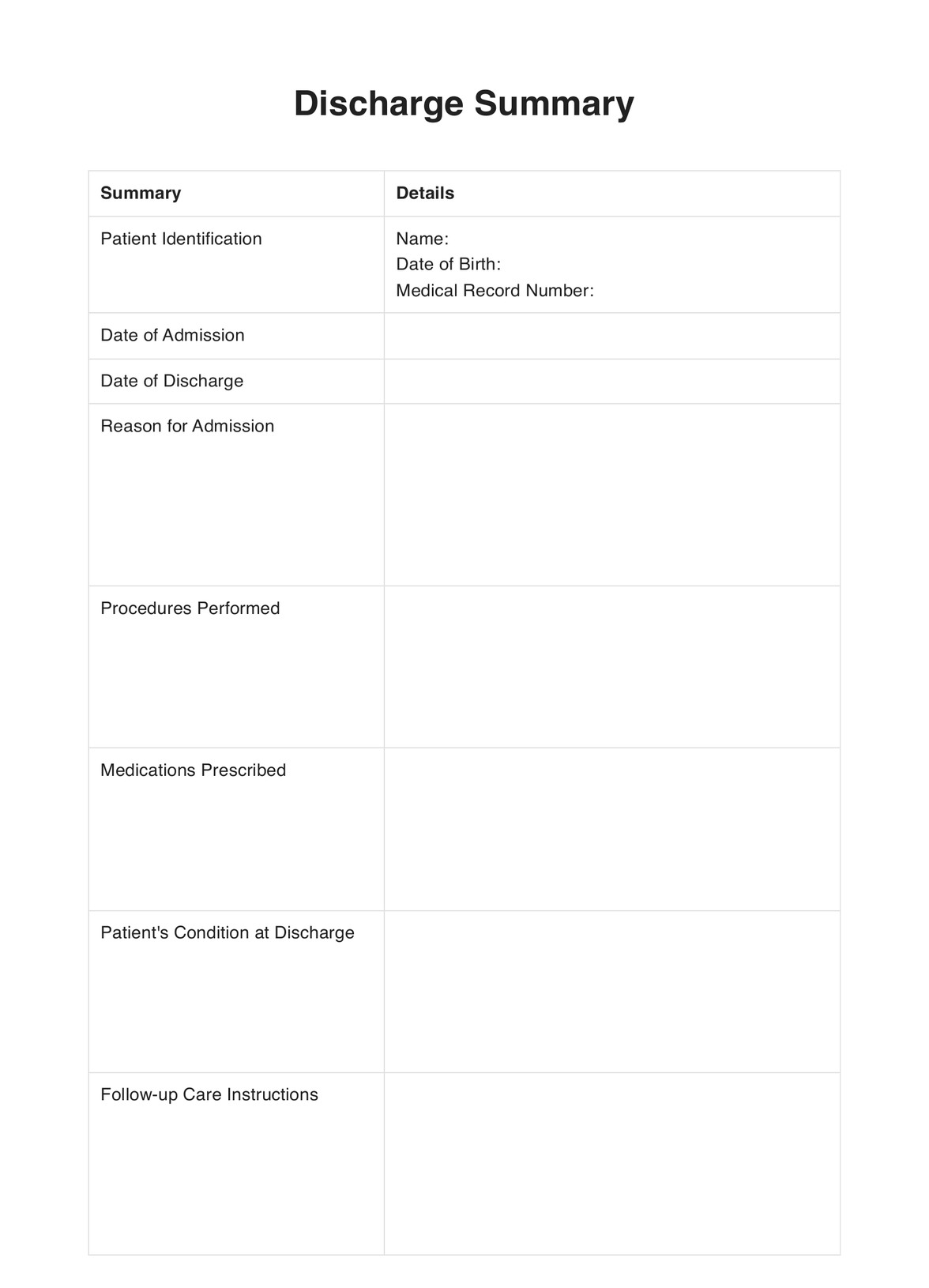A Discharge Summary is used after a patient's hospital stay to transition them from inpatient to outpatient care or transfer care to another healthcare provider.

Discharge Summary
Explore a detailed guide on a discharge summary, its requirements, examples, and a free downloadable template to streamline patient care transitions.
Discharge Summary Template
Commonly asked questions
A Discharge Summary includes patient identification, admission and discharge dates, the reason for admission, procedures performed, medications prescribed, patient's condition at discharge, follow-up care instructions, and a summary of the hospital stay.
A Discharge Summary assesses the patient's health journey during their hospital stay, including their initial condition, progress, treatment responses, and health status at discharge. It also outlines the plan for ongoing care post-hospitalization.
EHR and practice management software
Get started for free
*No credit card required
Free
$0/usd
Unlimited clients
Telehealth
1GB of storage
Client portal text
Automated billing and online payments











